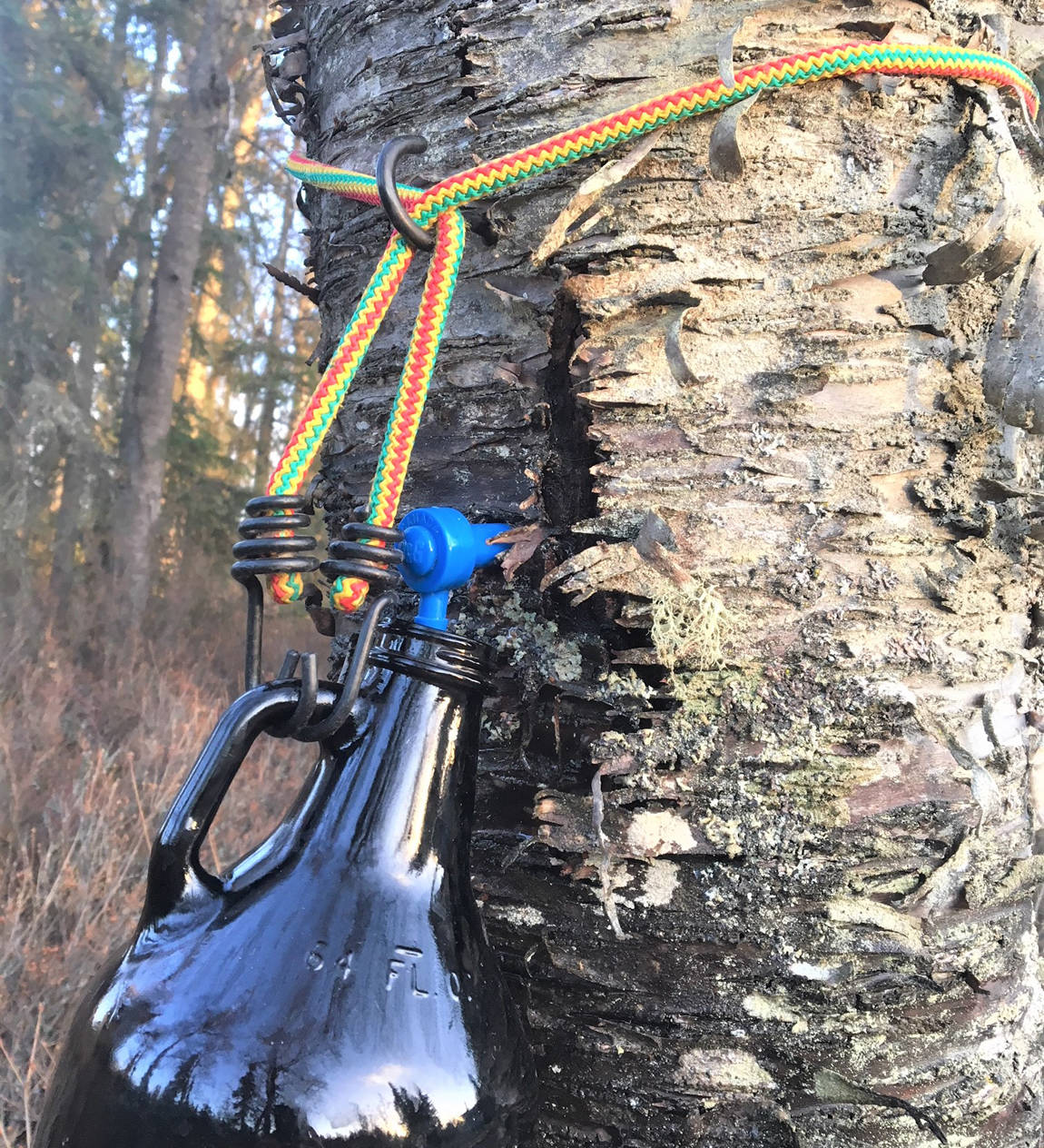In Lord of the Rings, the two hobbits, Merry Brandybuck and Pippin Took, grow taller as their hair curls after downing a few Ent-draughts between chasing and being chased by orcs. This drink is provided by the Ents, the tree-like shepherds of their arboreal kindred in Middle Earth.
As fictitious as this story may be, Ent-draught sounds very reminiscent of birch sap. I’ve been drinking sap from the birch trees in my yard this past week as I have every April for the past decade. I tapped maple trees as a boy in Wisconsin to make syrup, so extracting birch sap is an easy enough task.
Where I’ve failed miserably is in my one and only attempt several years ago to boil down the sap to make birch syrup. I knew that it takes 100 gallons of birch sap to make 1 gallon of syrup, a ratio 2 ½ times greater than that required to make maple syrup.
So the bad news is I turned the heat up on my stove to speed things up a bit, only to burn the sap. I found out later this was due to the high fructose content in birch sap (as opposed to sucrose in maple sap), which requires a lower evaporation temperature to prevent the scorched smell. Some commercial producers in Alaska even use reverse osmosis to distill birch syrup rather than heat.
The good news is I discovered birch sap, a traditional health elixir that was apparently well known to Native Americans, Russians, Scandinavians, Chinese, and Japanese living wherever birch grows around the globe. The fact that I was a bit late in rediscovering this medicinal tonic and delightful drink doesn’t detract from its history of being used to treat hypertension, urinary and gastroenteric disorders, gout, arthritis and scurvy!
The sap “rises” in the spring as the birch tree prepares itself for leaf-out, typically a period from mid-April to early May on the Kenai Peninsula. It flows through the system of vascular “pipes” that we call the xylem (if a biologist) or sapwood (if everybody else). Not surprisingly, birch sap is mostly water and minerals carried from the roots to the embryonic leaves hiding in the buds.
More specifically, birch sap is about 98 percent water, 1-2 percent sugars (fructose, glucose and sucrose), and some maltic, citric, fumaric and succinic acids. One website reported that one liter of sap contains 410 mg of calcium, 350 mg of potassium, 78 mg of magnesium, 27 mg of manganese and 50 mg of phosphorus. Thiamin (vitamin B1), riboflavin (vitamin B2), vitamin C, iron and copper can also be found in the sap.
An unusual sugar found in birch sap is xylitol, used as a low-calorie sweetener in chewing gum. Xylitol actually inhibits tooth decay by suppressing Streptoccocus bacteria and so has been used in toothpastes. And xylitol is absorbed more slowly than table sugar so it has been used by diabetics because it doesn’t contribute to high blood sugar. It isn’t surprising that one article I read on birch sap calls paper or white birch the “white gold of the boreal forest.”
With such rich blood coursing through the vascular system of a birch in spring, you would think that wildlife would have figured this out as well. Perhaps because birch sap rises for such a brief period in Alaska, only three weeks in our area and as short as 10 days in the Interior, wildlife don’t seem to have cued in on it.
A known exception are sapsuckers, a group of woodpeckers that includes two species in Alaska. Yellow-bellied sapsuckers have been recorded only a few times in Alaska, mostly in the Interior but twice in Seward. Red-breasted sapsuckers breed in southeast Alaska but have been found more frequently on the Kenai Peninsula in recent years. Sapsuckers drill small, square holes in rows around a tree trunk, which then act as miniature wells that fill with sap. They use their long tongues with their special brush-like tips to lap up the sap, and then eat insects attracted to the sap.
Here on the Kenai Peninsula, Ted Bailey, retired biologist from Kenai National Wildlife Refuge, published a short note in Western Birds in 2008 that described his observation of American three-toed woodpeckers feeding at horizontal rows of sap wells in Kenai Birch. He suggested that sap feeding on birches by three-toed woodpeckers may be more widespread than previously realized.
One of the most common insects to feed on birch sap are aphids. Large infestations of these small, pear-shaped bugs can drink so much sap from birch leaves that the branches may start to die back. A more lethal insect, the bronze birch borer, can interrupt sap flow by burrowing into the inner bark of the birch, essentially girdling the tree. This beetle currently exists only in small numbers in Alaska, but the Arctic Climate Impact Assessment forecasts it may become more prevalent as boreal Alaska warms. So even as sapsuckers extend their range northward into birch forests in response to a warming climate, so will some insects harmful to birch.
In the meantime, while it may not be Ent-draught, I encourage you to enjoy this spring-time treat that’s healthy, free, and running NOW! Contact the University of Alaska Cooperative Extension Service or Alaska Birch Syrup Makers Association about how best to tap birch trees or to make birch syrup.
Dr. John Morton is the supervisory biologist at Kenai National Wildlife Refuge. A version of this article was published by the Clarion in May 2011. Find more information about the Refuge at http://www.fws.gov/refuge/kenai/ or http://www.facebook.com/kenainationalwildliferefuge.

